Last summer, while hiking in the Canadian wilderness, I stumbled upon what I thought was a strangely shaped, very large bush. To my utter surprise, the ‘bush’ suddenly moved, revealing itself to be a moose calmly munching on leaves!
There I was, frozen in awe (and a bit of embarrassment), realizing that my wildlife-spotting skills might need some refining. This encounter, as hilarious as it was, sparked my fascination with these magnificent animals.
Therefore, today we’ll explore the world of moose, from their biology and behavior to their role in ecosystems and human culture.
Biology and Behavior
Physical Characteristics
| Feature | Description |
|---|---|
| Massive Antlers |
|
| Large Size |
|
| Long Legs |
|
Interestingly, while male moose boast these impressive antlers, in the deer family, it’s not just the males that can have antlers; in fact, female reindeer also grow them, a unique trait among cervids.
Habitat and Range
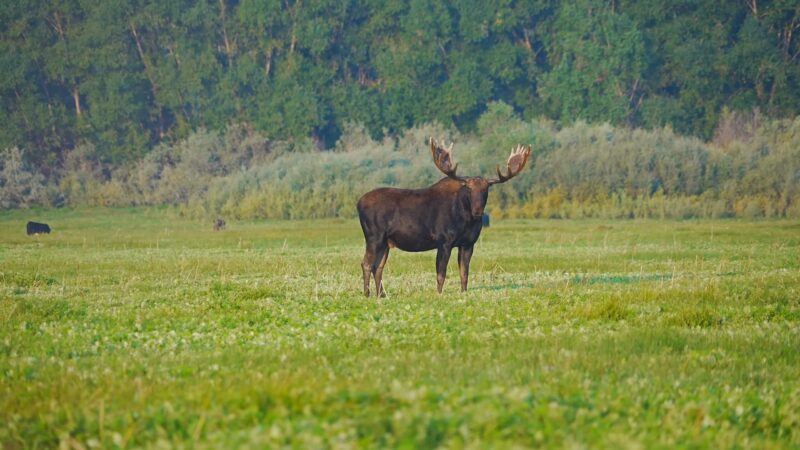
Forested Areas: Preferably near lakes, rivers, or wetlands. These environments provide the moose with necessary resources like food and cover from predators. The proximity to water is crucial for their diet, especially in summer.
Geographical Spread: Found across North America, Europe, and Asia. In North America, their range extends from Alaska to as far east as Maine and south to the Rocky Mountains. In Europe and Asia, they are found in the forested regions extending from Norway to Siberia.
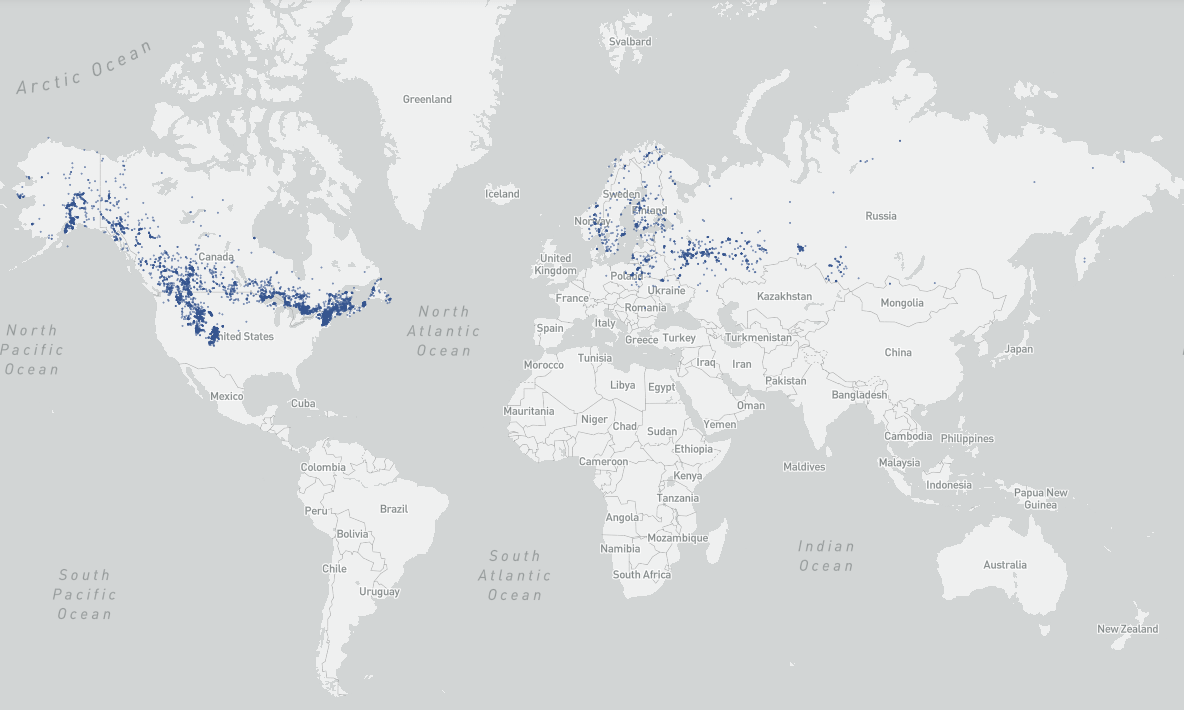
Diet and Foraging
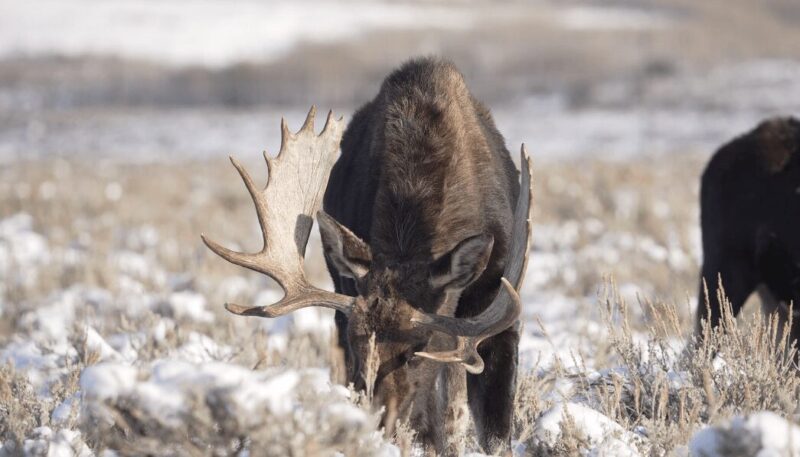
Aquatic Plants: In summer, they feed underwater, showcasing an impressive ability to dive and stay submerged. This diet is rich in minerals and helps them maintain their large size. Aquatic feeding also helps moose regulate their body temperature during warmer months.
Tree Barks and Twigs: In winter, their diet shifts to available vegetation, which includes woody plants and conifers. This change is crucial as other food sources become scarce. These animals have a four-chambered stomach, helping them digest tough cellulose found in bark and twigs.
Reproduction and Lifespan
Mating Season
Occurs in the fall, during which bulls engage in intense competitions to attract females. This period is known as the rut, and it involves loud vocalizations and displays of strength. Successful males may mate with several females in one season.
Lifespan
They live up to 15-20 years in the wild. Factors like predation, hunting, and environmental conditions can affect their longevity. In protected environments like national parks, some moose can live beyond 20 years.
Moose in Ecosystems
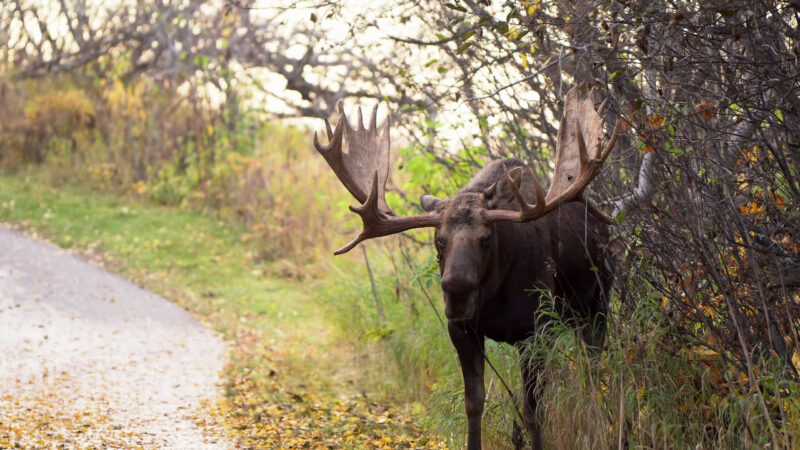
These animals play a crucial role in their ecosystems. They influence forest composition. By selectively feeding on certain plants, moose can shape the vegetation structure of their habitats. This browsing activity can lead to changes in tree species distribution, affecting the overall health and diversity of the forest ecosystem.
Similarly, other forest dwellers, like various bear species, have their own unique impact on the ecosystem, with their lifespans and habits shaping their habitats in different ways.
Additionally, their foraging habits can create spaces for other species to thrive, fostering a more diverse ecological community. Moose are a key part of the food chain for predators like wolves.
Their presence in an ecosystem provides a vital food source for these large carnivores, which in turn helps to maintain the balance of predator-prey dynamics. The health of these populations can directly impact the health and behavior of these predators, influencing their hunting patterns and territorial range.
Moreover, this relationship plays a crucial role in the natural regulation of moose numbers, ensuring ecological equilibrium.
Threats to Moose Populations
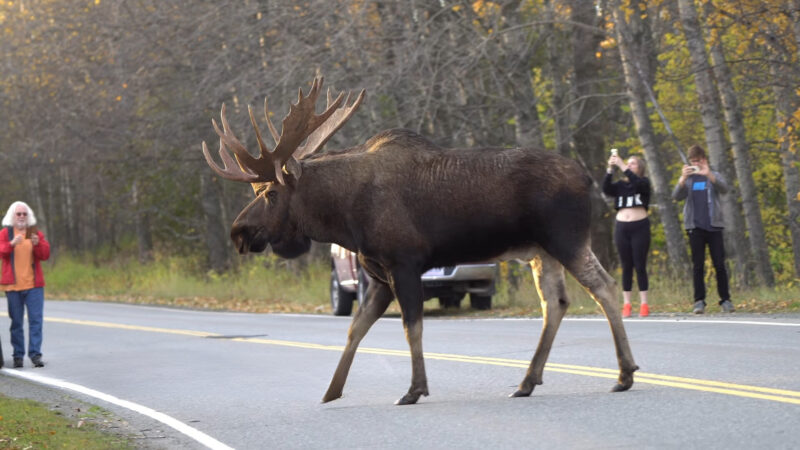
Several factors threaten these animals, including:
- Climate Change: Climate change significantly affects their habitat and food sources. Rising temperatures and altered precipitation patterns can lead to habitat degradation, making it challenging for moose to find suitable living and feeding areas. These environmental changes can also impact the growth and availability of key food sources for these animals, such as aquatic vegetation and tree bark, potentially leading to malnutrition and reduced reproductive success.
- Diseases and Parasites: Diseases and parasites, such as brain worms and ticks, pose significant threats to moose populations. Brainworms, transmitted through snail and slug intermediate hosts, can cause neurological problems leading to death. Ticks, especially in large numbers, can weaken moose by blood loss and transmit diseases. These health challenges, exacerbated by climate change, can reduce their populations and affect their ability to thrive in their natural habitats.
- Human Activities: Human activities, including habitat loss and collisions with vehicles, greatly impact moose populations. The expansion of urban areas and infrastructure development leads to the fragmentation and loss of natural habitats, forcing moose into smaller, less suitable areas. Vehicle collisions are a significant mortality factor for those in areas where roads intersect their habitats, posing risks to both moose and human safety. Additionally, human-induced climate change continues to alter the ecosystems where these animals live, further challenging their survival.
Human Interaction
Historical Significance
Throughout history, moose have been a vital resource for survival, providing substantial meat for sustenance and thick hide for clothing and shelter. In colder regions, especially in North America and Scandinavia, indigenous and early settler communities relied heavily on moose hunting to endure harsh winters.
The hunting practices also held spiritual significance in many cultures, where the moose was respected as a symbol of strength and endurance. Also, these animals have been revered in folklore and mythologies, often symbolizing wisdom, strength, and longevity in Native American and First Nations cultures.
Their images are prominently featured in totem poles, cave paintings, and tribal stories, indicating their deep-rooted presence in cultural heritage. For many communities, the moose isn’t just an animal but a spiritual entity, guiding their beliefs, traditions, and ways of living with nature.
Current Human Relationship
Conservation efforts have led to strict regulations on moose hunting to ensure sustainable populations, balancing ecological needs with recreational hunting. In many regions, wildlife management programs monitor moose health and numbers, using hunting quotas to control overpopulation and maintain a healthy ecosystem.
These regulations also help in preventing illegal poaching, ensuring that moose populations can thrive and contribute to biodiversity. Moose watching has become a popular activity in eco-tourism, drawing visitors to natural habitats to witness these majestic creatures in the wild.
This interest has spurred economic benefits for local communities, promoting conservation awareness and providing incentives to protect natural landscapes. Eco-tourism initiatives often include educational programs, helping people understand the importance of moose in the ecosystem and the need for their conservation.
FAQs
Can moose swim, and if so, how well?
Yes, they are excellent swimmers. They can swim up to 6 mph and even dive underwater to feed on aquatic plants. Their long legs and large size give them an advantage in water, allowing them to travel several miles in water if necessary.
Do moose have any natural predators?
Moose do have natural predators, primarily wolves and bears. Young calves are more vulnerable and often targeted by these predators. However, adult species are formidable opponents due to their size and strength, often deterring predators.
How do moose communicate with each other?
They communicate through vocalizations, body language, and scent marking. They make various sounds, including grunts, barks, and mating calls. They also use body postures to express emotions or intentions, and scent marking is crucial during the mating season.
What is the significance of a moose’s antlers, and how often do they shed them?
Moose antlers, found only in males, are used for display during mating season and for defense. They shed their antlers annually, usually in the winter, after the mating season. The shedding process allows for the growth of a new, often larger set of antlers each year.
Are moose solitary animals, or do they live in groups?
They are primarily solitary animals. Outside of the mating season, they prefer to live alone. However, cows (female moose) will stay with their calves for about a year, teaching them survival skills before they separate.
Summary
Moose are truly fascinating animals worth learning about. We need to understand this majestic creature to be able to appreciate the complexity of nature and the importance of conservation efforts.
So, next time you’re in moose country, you’ll be well-prepared to appreciate and observe these majestic giants in their natural habitat.








